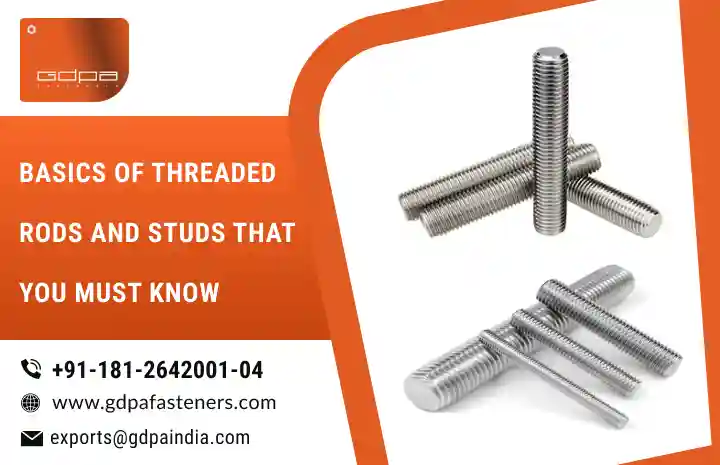
If you are working in a type of mechanical or construction industry, then most probably you use threaded rods and studs. However, if you are a beginner and don’t know about these tools, then you should read this blog. In today’s blog, we’ll share information on rods and studs along with their uses. Let’s get started:
What is a Threaded Rod?
Threaded rods come in different sizes, and as the name implies, it is threaded throughout the whole length of the rod. Generally, a threaded rod is made from zinc coated, carbon or stainless steel. Other types of bolts can be fastened onto the rod to match different construction applications. Basically, a threaded rod is used to attach two objects together, such as metal or wood, or to offer a joint connection between concrete and other materials.
It looks similar to a screw and the rotation’s direction is caused by a threaded rod based on whether the rod has a left-hand thread, right-hand thread, or both.
Threaded Rod Uses
It is a type of fastener, which is used to attach two objects together with the help of a fastener. These rods are mostly used in professional construction work, maintenance and repair, processing and production, and several other industrial applications. The following are some tasks, in which rods are used:
- Electrical installation
- Plant maintenance
- Medical machinery
- Construction
- Automotive assembly and repair
- Agricultural uses
- Marine applications and engineering
- Manufacturing, processing and production
Types of Threaded Rod
There are different types of rods available in the market. You can choose as per your requirements. Take a look at the following section to know the different types of rods:
-
Fully Threaded Rod
The thread covers the entire length of the rod. These rods are used to secure structures to ceilings and walls.
-
Double-Side Threaded Rod
This type of rod has a thread on each end. The rod puts into an unthreaded hole, and with the help of nuts, you can fix threaded ends. These types of rods are used in assembly housings and doors.
-
Internally Threaded Rod
This type of rod makes sure a secure joint but makes it easy to take apart if required at a later date.
-
Tap-End Studs
Tap-end stud is similar to double-end threaded rods, but it’s one side is longer as compared to the other and needs a nut. Its shorter side is known as a tap-end, and it should be lubricated before inserting into a tapped hole. These studs are commonly used in the automotive industry.
-
Hollow-Inside Threaded Rod
These types of the rod are used in the lighting industry. The rod is empty to enable wires and cables to pass through.
What are Threaded Studs?
A stud is a piece of threaded bar. It is used to resemble a machine screw without a head, even though some studs have heads that are permanently added to the part they are connected to. Basically, studs are designed to be permanently joined to one part in conjunction with a nut. Most often, a fastener manufacturer produces different types of threaded studs.
Types of Threaded Studs
There are different types of studs available in the market such as:
-
Fully threaded stud bolt
This type of stud bolt is the length of the threaded bar. Stud is used for fastening large parts together with the help of nuts at each end.
-
Tap end stud bolts
This type of stud has a short length of thread but at one end, and it can be inserted into a tapped hole. To accept a nut, it has a long thread at the other end.
-
Weld bolt
These have a full-length thread with a thin wide head to make it easy to weld and offer permanently attached stud.
-
Clinch stud
These contain a small tapered head with teeth that permanently swage themselves into sheet metal.
-
Bonding stud
It has a full-length thread and a flat wide head. In addition to this, it also has holes in the head.
-
Dowel screw
At one end of this screw, it has a wood screw, and at the other end, it has a machine screw. Dowel screws are designed to permanently insert into the wood, offering a stud to tighten a part by using a nut.
What is the difference between threaded rod and stud?
The length of the thread differentiates between threaded rod and stud . If the product is not 12 inches long, then it falls into the category of a stud. On the other hand, if the product is 12 inches or more than 12 inches long, then it falls into the category of threaded rod.
Wrapping Up
The blog shares information on threaded rods and studs along with the difference between them. From this blog, you come to know different types of threaded studs and rods. If you are working in the industry where these types of tools are used, then you must know about them.